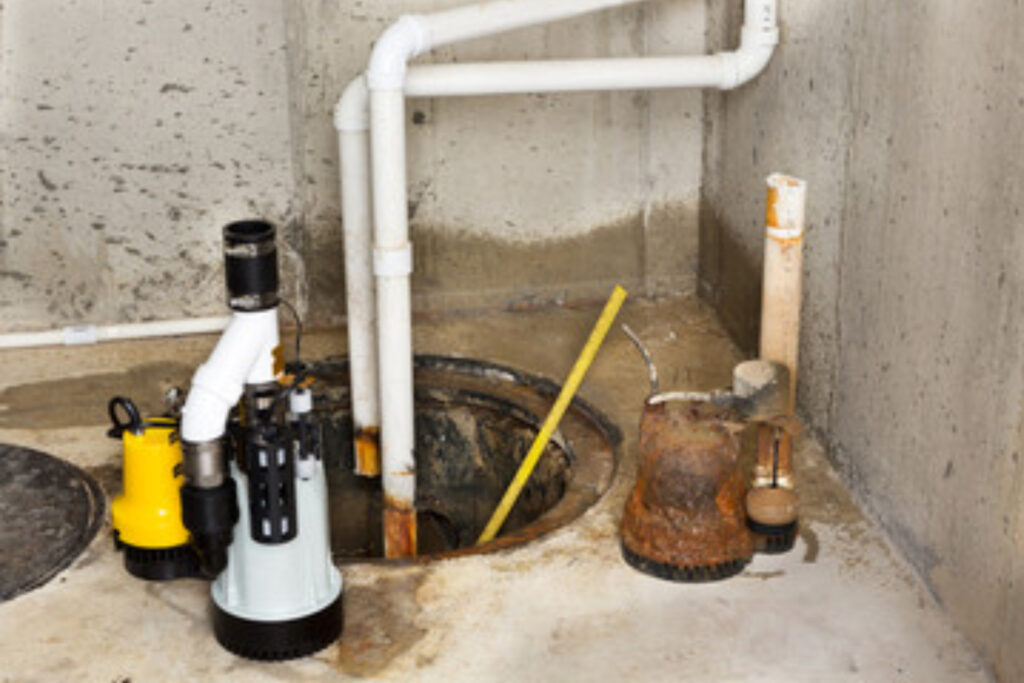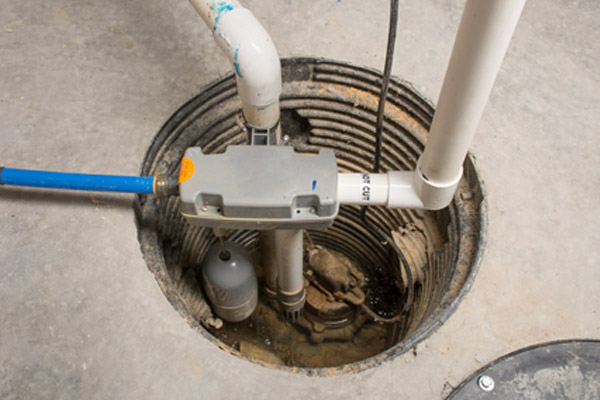Leading Steps for Maintaining Your Sump Pump
Leading Steps for Maintaining Your Sump Pump
Blog Article
Listed here down the page you can get a bunch of very good information around How to Care for Your Sump Pump.

Sump pumps are crucial components in numerous homes, especially in areas vulnerable to flooding or too much wetness. They aid avoid water damages by effectively removing excess water from cellars or crawl spaces. However, like any other device, sump pumps need normal upkeep to ensure they operate efficiently when required one of the most. Cleaning your sump pump is an important part of its upkeep, and understanding exactly how to do it appropriately can conserve you from expensive repair services and prospective disasters.
Intro
Preserving a tidy sump pump is crucial for its appropriate functioning and durability. Ignoring this essential job can cause obstructions, malfunctions, and eventually, water damages to your building. For that reason, finding out how to clean a sump pump is essential for home owners who rely upon these devices to keep their basements dry and safeguarded.
Understanding the Sump Pump
Prior to diving into the cleaning process, it's necessary to have a standard understanding of just how a sump pump functions. Generally mounted in a pit or basin below the basement floor, a sump pump contains several vital elements, including a pump, a float button, and a discharge pipe. When water accumulates in the pit, the float button turns on the pump, which after that pumps the water out through the discharge pipe, far from the structure's foundation.
Indicators of a Dirty Sump Pump
Recognizing when your sump pump requires cleansing is vital for stopping potential malfunctions. Some typical indications that indicate a filthy sump pump include strange sounds throughout operation, reduced water circulation, and noticeable debris in the pit. If you discover any one of these symptoms, it's necessary to clean your sump pump quickly to stay clear of any further concerns.
Planning for Cleansing
Prior to you begin cleaning your sump pump, it's essential to take some security precautions. Start by turning off the power to the pump to stay clear of any kind of electrical crashes. Furthermore, put on proper protective equipment, such as gloves and safety glasses, to secure on your own from dust, particles, and possible pathogens.
Step-by-step Guide to Cleansing a Sump Pump
Turning off the Power
Begin by detaching the power supply to the sump pump to prevent any accidents while cleaning.
Eliminating Debris and Dust
Utilize a pail or a scoop to eliminate any type of visible particles, dirt, or sediment from the sump pit. Dispose of the particles effectively to prevent it from blocking the pump or the discharge pipeline.
Cleansing the Pump and Drift Switch Over
Once the pit is free from particles, carefully eliminate the pump from the pit. Examine the pump and the float button for any kind of indications of damages or wear. Utilize a soft brush or towel to clean the surface areas and eliminate any type of collected grime.
Flushing the System
After cleansing the pump and float switch, purge the sump pit with clean water to eliminate any kind of remaining dirt or debris. This will certainly assist make certain that the pump runs smoothly and effectively.
Checking for Correct Functioning
Before re-installing the pump, execute a fast examination to ensure that the float button turns on the pump correctly. Put some water right into the sump pit and observe the pump's operation. If whatever is working appropriately, you can reassemble the pump and reconnect the power supply.
Maintenance Tips to Maintain Your Sump Pump Clean
Along with regular cleansing, there are several upkeep ideas you can comply with to maintain your sump pump in ideal problem:
Conclusion
Cleansing your sump pump is a critical aspect of its maintenance and makes certain that it runs efficiently when you require it the most. By following the steps detailed in this overview and including regular upkeep into your regimen, you can expand the lifespan of your sump pump and shield your home from water damages.
6 STEPS ON HOW TO CLEAN A SUMP PUMP PROPERLY
UNDERSTANDING SUMP PUMPS
Your sump pump plays a crucial role in protecting your home by managing and removing excess water. It primarily functions as a “shield”, guarding your basement against the damaging effects of water accumulation. The pump is housed in a sump pit in the lowest part of your basement, and its job is to pump out any water that collects there.
During heavy rainfalls or when snow melts rapidly, water can infiltrate your basement, posing potential risks like flooding, structural damage, and harmful mold growth. Here, the sump pump springs into action, pumping out the intruding water and directing it away from your home.
SAFETY FIRST
Before cleaning, remember to prioritize safety. Disconnect the sump pump from the power source to prevent any accidental electric shocks. Also, wear sturdy gloves to protect your hands from any sharp or dirty components within the pump.
REMOVE THE SUMP PUMP
After ensuring your safety, the next step is to remove the sump pump from its pit. Doing this might require careful maneuvering as you don’t want to damage any pump components. Once removed, clean the sump pit to remove any accumulated debris or sludge.
INSPECT THE PUMP
Inspect the pump for any visible signs of wear or damage. Check the power cord, float switch, and impeller housing. If any components look worn out or damaged, consider replacing them to ensure optimal performance.
CLEAN THE PUMP
Thoroughly clean the pump with warm, soapy water. Make sure to rid it of any dirt, gravel, or other debris that might impede its performance. You can use a toothbrush to clean the small, hard-to-reach parts of the pump.
REINSTALL THE SUMP PUMP
Reinstall the pump into the sump pit Make sure it’s positioned correctly to remove the water effectively Once it’s back in place, reconnect it to the power source TEST THE PUMP
Finally, pour some water into the pit to ensure the pump works correctly. It should start automatically and begin pumping out the water; if it doesn’t, check the power source and the positioning of the pump.
Remember, while cleaning your sump pump is an essential part of home maintenance, hiring a professional plumber for a thorough inspection and cleaning at least once a year is also important. This will ensure that your pump is in optimal condition, ready to protect your home from potential water damage.
BEST PRACTICES FOR CLEANING SUMP PUMP DISCHARGE PIPES
Regular Inspection: Regularly inspect your discharge pipes, especially during heavy rainfall or snowmelt periods. Look for any signs of blockage or damage. Early detection of problems can prevent serious issues down the line. Periodic Cleaning: Over time, sediment and debris can accumulate in the discharge pipes, impeding the flow of water. Regular cleaning helps keep the pipes clear and functioning efficiently. You can use a high-pressure water jet to effectively clean the pipes. Insulation During Winter: In colder climates, discharge pipes can freeze, blocking the outflow of water. Protect your discharge pipes from freezing temperatures by insulating them with foam pipe insulation. This will ensure the sump pump can continue to discharge water even in freezing conditions. Proper Positioning: The discharge pipe should be positioned to direct water away from your home’s foundation. Improper positioning can lead to water seeping back into the basement. Ensure the pipe is long enough and angled correctly. Installation of a Check Valve: A check valve prevents water from flowing back into your sump pit after the pump has pushed it out. Installing a check valve helps maintain the efficiency of your sump pump and reduces the risk of flooding. Minimize Pipe Turns: Every curve or turn in the discharge pipe can decrease the efficiency of water flow. By minimizing turns and bends in your discharge pipe, you can increase the efficiency of your sump pump. https://www.fullspeedplumbing.com/how-to-clean-a-sump-pump-properly9999/

We were shown that write-up about through someone on a different domain. So long as you enjoyed reading our blog post plz do not forget to pass it around. Bless you for being here. Don't hesitate to pay a visit to our site back soon.
Visit My Site Report this page